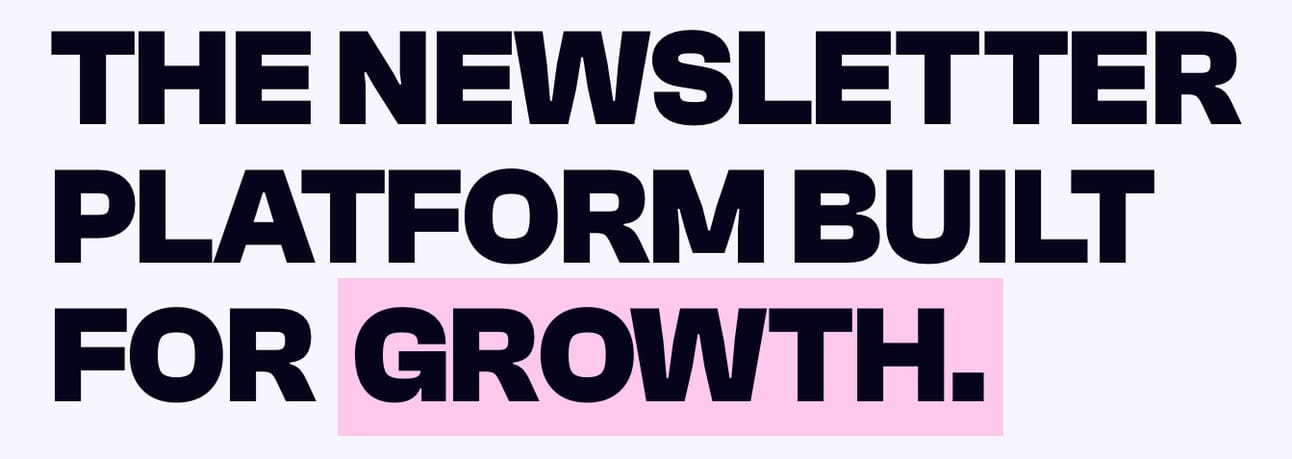Hey, Grow Newsie reader!
Remember the last email that made you stop scrolling and actually read? Chances are, it told a story.
Today, I'm sharing how to transform your newsletter from "just another email" into something your subscribers can't wait to open.
Here's what most newsletter creators miss: your subscribers don't need more information—they're drowning in it. What they crave is connection.
Research shows that user engagement metrics like dwell time and bounce rate are crucial factors in how content performs, and storytelling naturally improves these metrics by captivating audiences.
When you incorporate storytelling into your newsletter, you're not just sharing tips—you're creating an experience readers remember.
Sponsored by: MORNING BREW
Your career will thank you.
Over 4 million professionals start their day with Morning Brew—because business news doesn’t have to be boring.
Each daily email breaks down the biggest stories in business, tech, and finance with clarity, wit, and relevance—so you're not just informed, you're actually interested.
Whether you’re leading meetings or just trying to keep up, Morning Brew helps you talk the talk without digging through social media or jargon-packed articles. And odds are, it’s already sitting in your coworker’s inbox—so you’ll have plenty to chat about.
It’s 100% free and takes less than 15 seconds to sign up, so try it today and see how Morning Brew is transforming business media for the better.
1. Start With the Reader, Not You
The most common mistake is telling your own story when you should be thinking from the perspective of user stories.
Instead of: "We launched our new feature last month..."
Try this: "Meet Sarah. She was spending 3 hours every week manually..."
Your reader should see themselves in every story you tell.
2. Use the "Problem-Transformation-Solution" Framework
Every compelling newsletter story needs three elements:
The Problem: Paint the pain point vividly
The Turning Point: What changed everything?
The Solution: How your reader can achieve the same transformation
This mirrors the classic hero's journey structure where the protagonist faces challenges, undergoes transformation, and ultimately achieves their goal.
3. Create Suspense (Even in Business Newsletters)
You can use suspense in your newsletter by hinting at what's to come without giving too much away, and ensuring there's a clear turning point that creates tension.
Try opening with:
"I almost deleted my entire subscriber list. Here's why I didn't..."
"The email that generated $10K had just 47 words..."
"My worst newsletter mistake taught me this..."
4. Show, Don't Tell
Bad storytelling: "Our product is really effective."
Good storytelling: "Within 48 hours, Marcus had recovered 23% of his abandoned subscribers."
A great practice is to describe what characters see, hear, feel, or think without actually using those exact words. Use specific details, numbers, and sensory language.
5. Integrate Keywords Naturally Into Your Narrative
Here's the SEO secret: Instead of overloading content with keywords, make them flow naturally within your story's context, and adding detail can improve your ability to target long-tail keywords.
Your storytelling shouldn't feel robotic. Weave your keywords into examples, case studies, and real scenarios.
The 3-Minute Story Formula for Busy Newsletter Creators
Don't have time to craft elaborate narratives? Use this quick framework:
Opening Hook (1 sentence): Start with a relatable problem or surprising statement
Mini-Story (2-3 sentences): Share a specific example or case study
Lesson/Tip (2-3 sentences): Connect the story to actionable advice
Call-to-Action: What should they do next?
Example:
"I sent a newsletter at 11 PM on a Friday and got my highest open rate ever—38%. My designer friend Sarah told me her audience is most active late Friday, planning their weekend projects. I tested it. She was right. Try experimenting with send times this week and track what works for your audience."
Common Storytelling Mistakes to Avoid
❌ Making stories too long: Respect your reader's time. If your story takes more than 60 seconds to read, trim it.
❌ Forcing relevance: Your story's underlying message should suit your brand, and you should avoid getting lost in the story itself. Every story must connect to your newsletter's core value.
❌ Overusing "I" statements: While personal stories work, balance them with reader-focused language.
❌ Skipping the takeaway: Always answer: "So what? Why should my reader care?"
How to Measure If Your Stories Are Working
Track these metrics after implementing newsletter storytelling tips:
Open rates: Storytelling subject lines typically outperform generic ones
Click-through rates: Engaged readers take action
Reply rates: Great stories spark conversations
Unsubscribe rates: If they drop, your stories are resonating
When audiences connect with your newsletter's stories on a deeper level, they engage more with emails and ultimately become loyal subscribers.
Your Action Plan for This Week
Here's how to implement storytelling in your next newsletter:
Choose ONE tip from this edition
Find a real example from your own experience or a subscriber's
Write a 3-4 sentence story using the formula above
Test it in your next newsletter and note the response
Remember: You don't need to be a professional writer. You just need to be authentic.
The newsletters that stand out aren't the ones with the most information—they're the ones that make readers feel something.
Your subscribers have dozens of newsletters competing for their attention. Stories are your unfair advantage.
Keep growing!
With love,
Nikhil
How was today's edition?
If you’ve ever thought about starting your own newsletter (or switching to a better platform), I’ve partnered with the beehiiv team to set you up with:
✅ 20% off your first 3 months
✅ A free 30-day trial, no credit card needed


